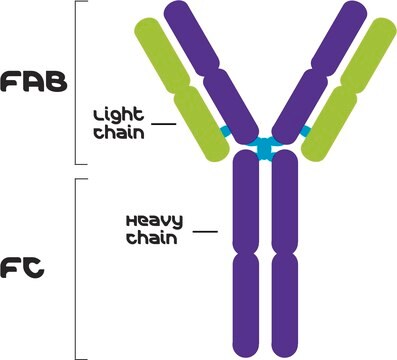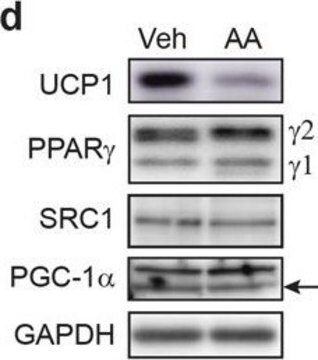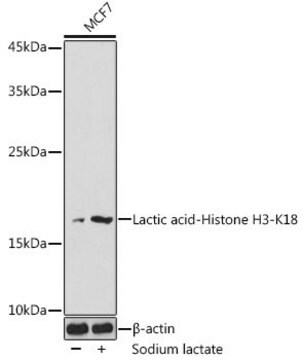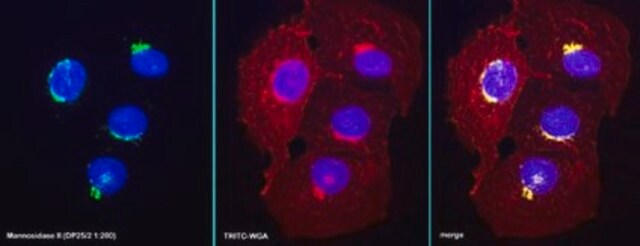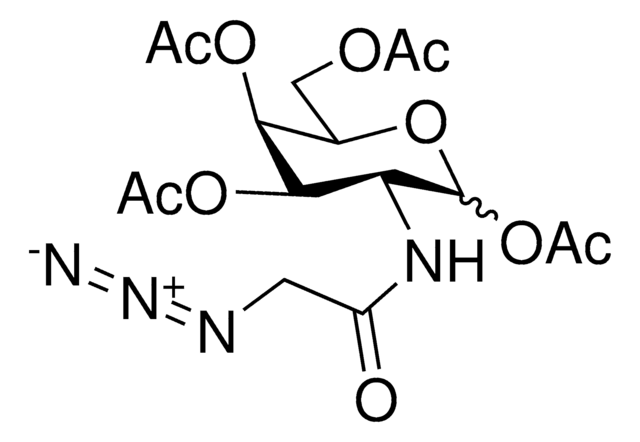G2404
Anti-Golgi FTCD antibody, clone 58k-9, Mouse monoclonal
ascites fluid
Sinonimo/i:
Anti-LCHC1
About This Item
Prodotti consigliati
Origine biologica
mouse
Livello qualitativo
Coniugato
unconjugated
Forma dell’anticorpo
ascites fluid
Tipo di anticorpo
primary antibodies
PM
antigen 58 kDa
contiene
15 mM sodium azide
Reattività contro le specie
human, bovine, mouse, pig, canine, kangaroo rat, hamster, monkey, rat
tecniche
electron microscopy: suitable
indirect immunofluorescence: 1:50 using cultured CHO cells
western blot: 1:5,000 using whole rat liver extract
Isotipo
IgG1
N° accesso UniProt
Condizioni di spedizione
dry ice
Temperatura di conservazione
−20°C
modifica post-traduzionali bersaglio
unmodified
Informazioni sul gene
human ... FTCD(10841)
mouse ... Ftcd(14317)
rat ... Ftcd(89833)
Descrizione generale
Specificità
Immunogeno
Applicazioni
The antibody was used:
- for the analysis of distribution of the 58K9 protein exclusively localized in the Golgi
- as a primary antibody in the immunofluorescence analysis in studies related to functioning of nuclear envelope protein TMEM209 in lung carcinoma cells, tracking TG2 (Transglutaminase Type 2) transport in renal tubular epithelial cells, binding of TRADD (TNFR-associated death domain protein) to TNF-R1 at the plasma membrane and localization of Wilson disease protein in the Golgi apparatus
- in immunoprecipitation studies
Immunofluorescence (1 paper)
Western Blotting (1 paper)
Azioni biochim/fisiol
Esclusione di responsabilità
Non trovi il prodotto giusto?
Prova il nostro Motore di ricerca dei prodotti.
Codice della classe di stoccaggio
12 - Non Combustible Liquids
Classe di pericolosità dell'acqua (WGK)
nwg
Punto d’infiammabilità (°F)
Not applicable
Punto d’infiammabilità (°C)
Not applicable
Certificati d'analisi (COA)
Cerca il Certificati d'analisi (COA) digitando il numero di lotto/batch corrispondente. I numeri di lotto o di batch sono stampati sull'etichetta dei prodotti dopo la parola ‘Lotto’ o ‘Batch’.
Possiedi già questo prodotto?
I documenti relativi ai prodotti acquistati recentemente sono disponibili nell’Archivio dei documenti.
Il team dei nostri ricercatori vanta grande esperienza in tutte le aree della ricerca quali Life Science, scienza dei materiali, sintesi chimica, cromatografia, discipline analitiche, ecc..
Contatta l'Assistenza Tecnica.
